Executive Summary
Nearly seven in ten Californian adults believe that abortion should be legal in all or most cases. Since the Supreme Court eradicated the constitutional right to abortion in the 2022 Dobbs decision, 15 states have banned abortion and an additional seven have imposed bans before 18 weeks of gestation. Tens of millions of American women and girls now live in states that deprive them of agency, bodily autonomy, and the right to make their own decision about if and when to have children.
Despite widespread American support for reproductive freedom, the anti-abortion movement continues to pursue a national abortion ban. It has unveiled plans to ban abortion through executive action without any Congressional oversight or approval. Should Republican nominee Donald J. Trump win the presidency in 2024, he will likely seek to impose a national abortion ban, as evidenced by his statements taking credit for appointing the Supreme Court Justices who overturned Roe v. Wade.
Since Dobbs, women have been denied care and have suffered grievous health complications. Rape victims and young teens have been forced to give birth because they lived in a state that bans abortion even in cases of rape, incest, or the health of the mother. Many more of these stories have gone unreported and untold. As one physician reflected, these are “the absolutely terrible, horrific circumstances we’re in now.”
Yet in contrast to states that rushed to impose extreme abortion bans, California acted boldly from the start to establish itself as a haven for abortion care access.
In November 2022, California voters approved Proposition 1, a constitutional amendment to guarantee the right to abortion and contraception. The legislative sessions of 2022 and 2023 yielded increased funding to support abortion care access and laws to strengthen legal protections, as well as to expand equitable abortion care access for Californians and people facing restrictions in other states. Governor Gavin Newsom has championed reproductive freedom from his bully pulpit, issued executive orders protecting rights, and helped secure significant state funding to support abortion and reproductive healthcare access.
Regionally, the Bay Area also moved swiftly to protect reproductive freedom, rights, and justice, launching the San Francisco Bay Area Abortion Rights Coalition (BAARC) in January 2023, developed and led by the San Francisco Department on the Status of Women, with support from San Francisco Mayor London Breed and the Board of Supervisors. On June 18, 2024, Mayor London Breed put forward the San Francisco Reproductive Freedom Act, a ballot measure to ensure the reproductive freedoms and rights of everyone within the city remain protected.
The BAARC initiative is a regional collective of municipal and county governments and reproductive health and justice stakeholders committed to reinforcing the local reproductive healthcare delivery system in the post-Dobbs era. Nine counties are participating in the initiative: Alameda, Contra Costa, Marin, Napa, Santa Clara, San Francisco, San Mateo, Solano, and Sonoma. Also participating in the initiative are practitioners, stakeholders, and leaders in reproductive health, freedom, and justice.
The Bay Area is home to a vibrant, diverse, and dedicated community of sexual and reproductive healthcare providers, reproductive freedom and justice advocates, and an abundance of research, technology, legal, and medical institutions. This community has rallied around the effort to restore, safeguard, and expand abortion care access to Californians, as well as to provide a safe haven in the Bay Area for women who live in banned states.
“Preparing for An Uncertain Future in Post-Dobbs America” presents the results of research by the Gender Equity Policy Institute, initiated and funded by the San Francisco Department on the Status of Women. This report provides foundational research and actionable recommendations to enable the BAARC initiative to best serve the Bay Area community, participate effectively in local, state, and federal policy debates, and establish itself as an effective multi-sector, multi-jurisdictional collaborative to guarantee reproductive freedom, rights, and justice in the region.
The findings presented here are drawn from research conducted from June 2023 through May 2024, which included focus groups with abortion care clinicians and people who provide practical support throughout the Bay Area, interviews with medical and legal experts and community stakeholders, a review of the national and global literature on sexual and reproductive health (SHR), and analysis of demographic and socioeconomic data on the region’s population of reproductive-age women.
There is wide consensus that abortion and comprehensive sexual and reproductive healthcare should be of high-quality, affordable, equitable, and accessible to all people.
Our research shows that the Bay Area has a strong infrastructure for delivering high-quality sexual and reproductive healthcare. In the region, increased demand for abortion care is being met, thanks to the dedication of medical providers and advocates and the financial support they have received from the City of San Francisco and the State of California.
Nevertheless, the increased demand for care is putting a strain on clinics, medical facilities, and abortion care clinicians and staff. Nonprofit and volunteer organizations that provide indispensable support to patients are also working at full capacity. In interviews and focus groups, these people on the frontlines of abortion care in the Bay Area have shared the major challenges they face and identified specific ways that the BAARC initiative and state policymakers can support their work and safeguard access to abortion and reproductive healthcare.
In sum, the Bay Area has many of the necessary foundations in place for delivering high-quality, affordable, equitable, and accessible abortion care. A wide body of scientific and medical research concludes that protecting reproductive freedom and supporting full and equitable access to abortion protects the health and well-being of women, people who can become pregnant, and their babies. (See Part 2.) Our aim in this analysis of the landscape of abortion care in the San Francisco Bay region is to bolster the efforts of policymakers and stakeholders to safeguard and improve reproductive health and justice for Bay Area residents, as well as to provide a safe haven to all people deprived of fundamental reproductive freedom in post-Dobbs America.
We conclude this report with recommendations in five areas, summarized here and detailed in Part 6.
Recommendation 1: Regional Systems Coordination and Information Sharing
A clear consensus emerged among members and affiliates of BAARC: the most important benefit of the initiative is information sharing and systems coordination across the region. Every sector currently involved in BAARC identified opportunities in this area.
- Prioritize community engagement, connect with communities through trusted advocates, and include community groups as full partners.
- Provide topic-specific trainings (by webinar) to build knowledge and capacity across sectors throughout the region.
- Share information about successful local programs and develop toolkits or topical resource guides to facilitate regional replication.
- Establish mechanisms, such as workgroups, quarterly meetings, and newsletters, to build connections and community among BAARC initiative participants.
- Enlist Bay Area participants and statewide groups like Essential Access Health and CCRF to help expand the coalition.
Recommendation 2: Coordination of Care and Logistics of Access
Clinicians who provide abortion services stressed the need for better coordination of care. Throughout the region, the community of healthcare professionals and advocates have developed innovative solutions, but efforts are fragmented and siloed. Building an infrastructure for care coordination can help identify and scale these solutions, as well as innovate new linkages and systems. Closely related to the need for medical care coordination is support for managing the logistics of access, whether it is scheduling travel, arranging lodging/childcare, paying for a procedure, or navigating insurance coverage.
- Create a central hub for care coordination to help ensure patients receive care at appropriate facilities based on their medical needs.
- Develop plans and policies to address the difficulty women and providers have in enrolling in pregnancy-specific Medi-Cal to pay for abortion care.
- Provide logistical and technical assistance to patient-supporting organizations, such as abortion funds.
- Develop plans to assess region-wide logistical needs and attract funding for practical support from public and/or philanthropic sources.
- Work with agency partners to ensure patients are aware of all resources for care and practical support.
Recommendation 3: Security, Privacy, and Legal Protection
Regional coordination on legal issues can be critical in addressing the significant concerns providers, patients, and advocates have about their personal security, digital privacy, and vulnerability to civil or criminal legal action by states that ban abortion.
- Coordinate regionally on law enforcement matters, including the Attorney General’s Reproductive Justice Unit in BAARC’s efforts.
- Conduct assessment of all locations where anti-abortion protests are interfering with care to develop action plans.
- Develop model local ordinances.
- Develop or host training programs for local law enforcement.
- Develop and share guidelines and best practices for permitting abortion clinics.
- Improve systems to protect physical and digital security of abortion care providers.
Recommendation 4: Outreach, Education, and Communications
Through public health communications, initiatives like BAARC can help ensure that public dialogue about abortion and reproductive healthcare remains grounded in science and evidence.
Likewise, many of BAARC’s larger objectives can be advanced through outreach, public education, and communications. Such efforts should be developed in close coordination with the community, as well as with physicians, researchers, and legal experts. Private-public partnerships can be particularly beneficial in this domain.
- Publicize more widely the existing resources about abortion and reproductive healthcare in California, such as abortion.ca.gov.
- Conduct public information campaigns and outreach within marginalized communities about the availability of free and low-cost abortion care in California, as well as how to access it.
- Develop an information campaign around telemedicine and medication abortion to help people know where to go when they need to access care.
- Amplify the voices and stories of people who have had abortions.
- Develop a plan to assess whether healthcare providers in the region are receiving comprehensive implicit bias training to ensure that all patients, including those coming from other states, receive care that makes them feel safe and respected.
- Promote, defend, and amplify a scientific, evidence-based approach to abortion and reproductive healthcare.
- Engage the Bay Area’s tech community in reducing disinformation about SRH and abortion on social media platforms and in search results.
- Publicize scientifically accurate information about abortion to counter medically false information promulgated by the anti-abortion movement.
Recommendation 5: Policy Coordination and Advocacy
The barriers to high-quality, affordable, equitable, and accessible abortion care in the region, in many instances, can most effectively be addressed at the state level in alliance with other state and local reproductive freedom and justice policy networks.
- Collaborate with existing policy networks, such as the California Future of Abortion Council and California Coalition for Reproductive Freedom, to identify policies relevant to the Bay Area.
- Explore designating a BAARC representative to the FAB Council and a FAB Council member to BAARC to facilitate rapid information sharing.
- In advocacy with elected officials, promote the use of a scientific knowledge base in policymaking and decision-making about abortion.
- Include SRH researchers and physicians who provide abortions in crafting policy related to medical procedures in order to avoid vague or difficult to operationalize provisions.
- Require community college student health centers to provide the full range of reproductive healthcare services, including medication abortion, as is now the practice in the University of California and California State University systems.



